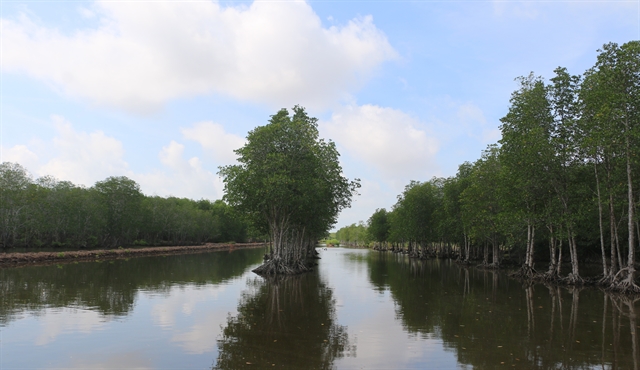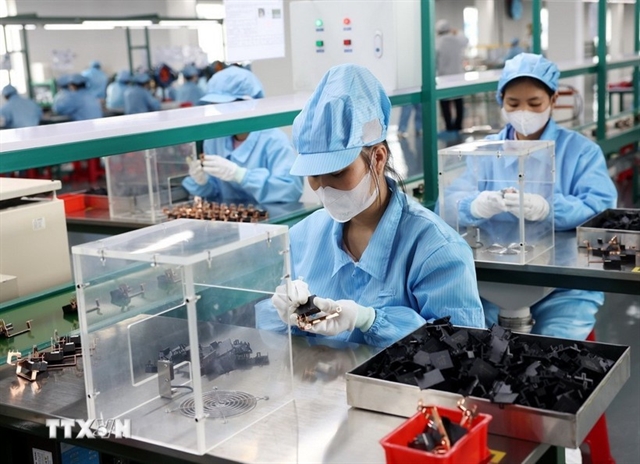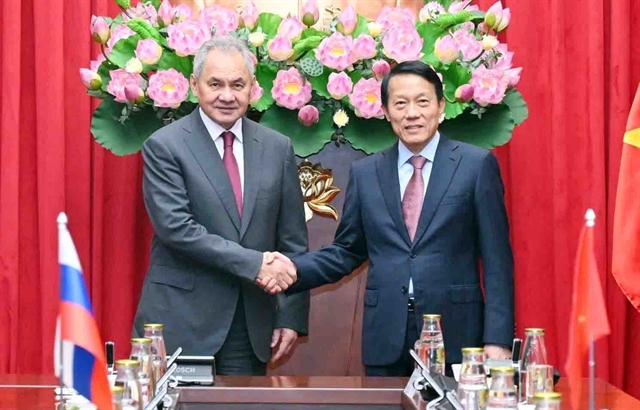 Environment
Environment

 |
| Workers take care of trees in Phan Rang City, Phan Thiết southern province. — VNA/VNS Photo Nguyễn Thành |
HÀ NỘI — An environmental audit is well established in countries with modern industries, but is very new to developing countries including Việt Nam.
Along with traditional management tools, an environmental audit is an effective way of providing information to State management agencies on the field and to restore the environmental inspection and supervision.
Effectiveness
A broad concept, depending on each country, international organisations and what it is being used for, there is currently no single definition of what an environmental audit represents.
The World Bank believes that environmental audit is an inspection of an organisation, facility or location to determine how the organisation or facility meets environmental management criteria.
According to the Việt Nam Environmental and Marine Sciences Institute (VISI) under the Ministry of Natural Resources and Environment (MoNRE), such an audit aims to determine the advantages and disadvantages of the facility's environmental management system.
It assesses the facility's compliance with national, local or international environmental regulations and minimises the impact on people and the environment due to pollution and environmental damage to improve administration.
In the first instance the environmental audit will focus on ensuring that the facility abides to all legal documents and environmental regulations.
Later, as environmental issues became more and more extensive and complex, the audit was developed and covered many different forms such as audit for energy, waste, raw materials, impacts and transportation.
In the world, there are currently two types of environmental audits including compliance assessment audits and management system audits.
The compliance assessment audit is the most common type to review and evaluate the legal compliance of a company, organisation or project during its operation.
Japan is the country with the most developed environmental audit programme in Asia.
Experts from the Japan International Cooperation Agency (JICA) said that in 1997, the Japanese Ministry of Environment conducted the first research project on environmental audits.
The Japanese Ministry of Environment and Ministry of Industry and Trade play an important role in guiding and promoting the environmental audit application in businesses.
Between 1999-2000, the Japanese Ministry of Environment researched and published environmental auditing guidelines, but they remain that, guidelines and are not mandatory.
Alongside these, the Ministry of Industry and Trade of Japan also conducted research on audit projects for internal management purposes.
Following their environmental audits, two leading Japanese corporations Toyota and Canon saved billions of yen (one billion yen equals US$6.4 million) each year by cutting energy use, minimising waste processing costs and using cleaner technology in manufacturing.
Great benefit
In Việt Nam, although environmental audits have been implemented by a number of organisations and units, up to now, there has been no general technical guidance.
Therefore, in some cases, any environmental audit is simply integrated into financial audit or inspection and examination process.
With the goal of making environmental audit a sharp and effective management tool, the Law on Environmental Protection 2020 has put forward more specific and detailed regulations.
According to the law, an environmental audit is a systematic and comprehensive review and assessment of pollution management and control in enterprises and service establishments.
Article 74 regulates in detail a number of contents on the work including the use of energy, chemicals, raw materials and scrap imported from abroad as well as pollution and waste control and administration.
The law encourages businesses and service establishments to conduct their own environmental audit without any mandatory requirements.
MoNRE is the agency that provides technical guidance on environmental self-audit for establishments and is responding to the growing trend for companies to undergo such audits.
Hàn Trần Việt, an expert from the VISI, said that an environmental audit helped the facility discover risky issues related to the use of energy, chemicals and raw materials and from that it was able to find solutions to improve the production process efficiency.
Facilities can calculate, check and manage the amount of generated waste to reduce costs for waste treatment while performing such an environmental audit helps the facility discover strengths and weaknesses in its management for continuous improvement.
In particular, through the environmental audit, the Government will see organisations’ compliance with current policies and detect shortcomings and inadequacies in different aspects such as revenue, expenditure and use of environmental public funds.
Based on the limitation detection, the auditors will make specific recommendations to the audited unit and relevant State management agencies.
The VISI is seeking feedback on technical guidance on environmental self-audits in businesses and service establishments to provide general information about the process, content and methods for organisations to proactively research and perform environmental audits in the near future. — VNS




